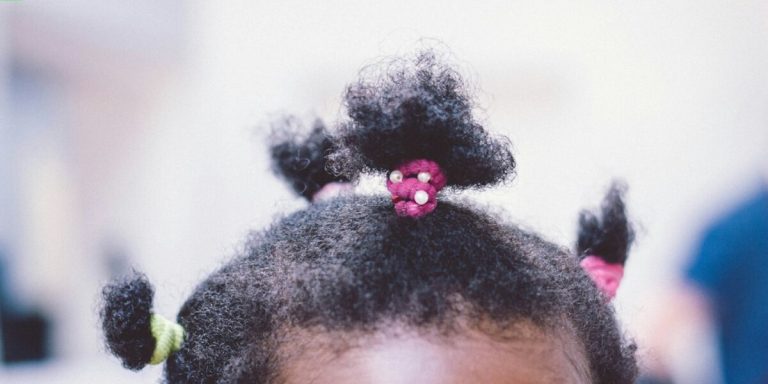How to Take Care of Thin Hair for a Fuller and Healthier Look
Understanding how to take care of thin hair can be a tad bit tricky. Despite its delicate nature, fine or thin hair is surprisingly versatile and can transform from flat to full with just a little extra attention. The secret lies in learning the correct treatments that enhance volume without causing breakage, picking the perfect products for your specific type, and perhaps most importantly adopting an optimal daily routine.
In this blog post, we delve deep into practical techniques on maintaining thin hair – transforming it not only to appear fuller but also encourage healthier growth all around. These methods are simple enough even if you’re new at this; they will provide valuable insights irrespective of whether your goal involves managing existing conditions or preventing potential problems down the road. So let’s jump right into these effective ways to love and live with fine tresses.
Did you know?
Massaging your scalp daily for five minutes can promote hair thickness. This practice stretches hair follicle cells, stimulating the production of thicker hairs.
Understanding Thin Hair: Characteristics and Challenges
Experiencing thin hair often comes with its own unique set of characteristics and challenges. For starters, it’s essential to note that thin hair isn’t necessarily an indication of unhealthy tresses; rather, it might be a result of numerous factors such as genetics or aging.
Thin strands may exhibit low density and volume which can make styling difficult at times. The lack thereof weight makes this type prone to getting easily tangled or appearing flat despite using volumizing products – these are some common issues faced by individuals trying to manage their fine locks on the daily basis in 2023.
Moreover, because each strand is smaller in diameter compared to thicker hair types, one critical characteristic people need to understand about thin hair is its fragility. It tends more towards breakage due its delicate nature- making proper handling crucial for maintenance purposes. A fundamental part of caring for this kind includes not only selecting suitable products but also adopting adequate techniques like gentle combing or avoiding excessive heat during styling.
Recognizing the Signs of Fine or Thinning Hair
Recognizing the signs of thin or fine hair is a pivotal first step in understanding how to take care of thin hair. One primary sign you might notice is your strands tend to break easily. They often lack volume and can appear flat, even after trying volumizing products.
Secondly, if your ponytail diameter has reduced significantly or your scalp becomes more visible than usual, then there’s a likelihood that you have slimming locks. This reduction isn’t always cause for alarm because it could also be attributed to natural aging processes.
When you notice a significant amount of hair falling out during combing or brushing, take note. Healthy strands should shed only 50-100 hairs daily, according to recent dermatologist studies from May 2023. If you consistently lose more than the upper limit over two weeks, this may indicate potential baldness issues that need prompt attention from health professionals. Specialized trichologists can diagnose and offer treatments tailored to maintain healthy hair growth.
Common Struggles Associated with Maintaining Thin Tresses
Thin hair, while having its unique charm and appeal, presents a unique set of challenges for daily care and maintenance. One common struggle linked to thin tresses is the lack of volume. Because each strand has less density compared to thicker hair types, creating lasting voluminous hairstyles can be tricky.
Another typical problem related to thinning strands is scalp visibility. Your mane might appear sparser due to your delicate locks’ inability to effectively cover your scalp area fully. This situation may create some stress or embarrassment in social settings where you’re conscious about presenting yourself perfectly.
Brittleness poses another major challenge when handling fine hair textures. Given their weak structural composition, they are more prone towards breaking from minor stresses like brushing or styling products use too frequently – hence how important it’s adopting gentle techniques during grooming routines becomes all even critical here.
Lastly but significantly – maintaining overall health vitality becomes extremely crucial yet challenging aspect specially due low sebum production characteristic feature inherent within these kinds hairs typically leading dullness damage quicker than would otherwise happen normal course .
Essential Routines for Nurturing Thin Hair
Taking care of thin hair doesn’t have to be an arduous task. In 2023, we are fortunate enough to utilize a wealth of knowledge and ingredients that can help us nurture our delicate strands effectively. Let’s delve into the essential routines for creating a supportive environment for your fine tresses.
First and foremost, it’s vital to understand that treating thin hair with kindness is paramount in its care regime. Avoid exposing your locks excessively to heat treatments like straighteners or curling irons as they may cause damage due their fragile nature. Instead, opt for air-drying post washing which is far gentler on your strands while keeping them strong and healthy.
Investing time in choosing the right products specifically designed for fine stranded hairs should also form part of this nurturing routine- shampoos enriched with proteins can strengthen each strand from root-to-tip without weighing them down; lightweight volumizing conditioners add much needed body; regular use of nourishing masks ensures optimal hydration levels thus preventing breakage before it occurs.
Establishing a Gentle Cleansing Regimen
Taking care of thin hair involves a strategic approach that prioritizes gentle handling and specific product choices. A critical aspect is establishing a gentle cleansing regimen meticulously tailored to nurture your delicate strands.
Firstly, it’s essential to understand how often you should be washing your thin hair. Overwashing can lead to dryness and potential damage, while under-washing might leave room for excess oil build-up which could weigh down the already light locks making them seem even thinner. So ideally, aim at shampooing every other day or three times per week in accordance with the level of oiliness on your scalp.
To select the right hair cleaning products, choose lighter formulations crafted for fine or limp hair to avoid overburdening your tresses. Look for ‘volumizing‘ shampoos; these contain panthenol, a component renowned in beauty circles. Panthenol thickens fibers by penetrating the hair cuticles and causing an expansion effect, leading to a fuller-looking mane – just what you need!
Implementing Strengthening Treatments
To effectively care for thin hair and enhance its volume, incorporate strengthening treatments. Here’s how to do it:
Start by choosing the right products designed specifically for thin hair. Look for shampoos, conditioners, or serums that contain ingredients like biotin and collagen which are known to strengthen strands from within.
Daily massaging your scalp can also play a vital role in revitalizing your hair follicles. A three-minute gentle rub with essential oils such as jojoba oil or argan oil aids blood circulation at the roots promoting better growth.
Using heat protectant sprays before using any heating tools on your tresses is another effective technique you should adopt as part of this routine in 2023. Excessive use of hot styling devices might lead to damage making your mane appear even more sparse than it actually may be.
Hair masks are an excellent way to revitalize thinning locks too! Natural DIY masks made with eggs or avocados provide proteins necessary for healthy lustrous length while store-bought variants work their magic through deep conditioning agents they house inside them.
Another method linked directly with fortifying fragile threads involves limiting chemical procedures – frequent dyeing perming straightening among others stresses out both scalp & strands accelerating attrition.
Protect & Style: Managing Thin Hair Daily
Taking care of thin hair can be a challenging endeavor, especially considering the volume and strength issues often associated with this type of hair. However, it is possible to keep your fine strands healthy and beautiful with some necessary steps implemented consistently in your daily routine. Remember that protection and style go hand-in-hand when managing thin hair.
The ‘Protect & Style’ approach for fine hair care focuses on:
- Shielding delicate strands from potential damage caused by heat styling tools or harsh chemicals in personal care products.
- Enhancing the aesthetic appearance of fine hair using appropriate styling techniques.
In 2023, numerous efficient natural solutions are available to keep your fragile tresses healthy and appealing without causing undue harm.
Protect your hair not only by avoiding damaging factors but also by nourishing it to make it resistant to breakage. Use styling methods that:
- Retain moisture
- Create the illusion of increased bounce or density
These are better than rough techniques like back-combing, which can further weaken vulnerable hair through excessive stress.
Remember consistency matters more than intensity when adopting any new regimen related “Hair Care & Maintenance”. Be patient yet persistent – achieve durable benefits over time rather than quick-fixes promising unrealistic outcomes overnight!
Choosing Protective Hairstyles for Delicate Strands
Taking care of thin hair can often be a challenge. Strands that are delicate require special attention and the right styling choices to prevent damage and maintain health. Here’s how you can choose protective hairstyles for your precious strands.
First, opt for loose styles more often than tight ones—the less strain on your scalp, the better. A loosely tied ponytail or bun is simple yet chic enough for everyday wear while being gentle on your hair.
Next, consider braiding as an excellent way to protect thinning hair from breakage due to exposure and overstyling. Braids help cut back friction between hairs caused by movement while adding volume visually—a perfect win-win situation!
Thirdly, have you tried twists? Similar to braids but quicker in execution time-wise; these add a fun element without taxing fragile follicles too much! Whether it’s Senegalese twists, two-strand twists or flat twist updos – they all do wonders when dealing with thin texture.
Remember this: while taking care of thin hair does involve strategic style selection—it doesn’t mean sacrificing looking stylish overall!
It might take some trial-and-error before finding what is best suited personally; however—patience pays off eventually.
Lastly always ensure regular trims no matter which hairstyle one sticks onto because split ends worsen any pre-existing problems otherwise undetected initially regarding thickness concerns!
Keep experimenting safely until discovering something cherished forever—that’s precisely about “how to take care of thin hair”.
Avoiding Heat Damage and Breakage
Taking care of thin hair requires a special approach, chiefly to minimise the risk of heat damage and breakage. Here are some essential tips on how to take care of thin hair in 2023.
1. **Limit use of heated styling tools**: Straighteners, curling irons, and blow dryers can cause severe thermal damage leading to weaker strands. Whenever possible, allow your locks air-dry naturally or go for no-heat hairstyles.
2. **Protect Hair From Heat:** When you do need to style with heat because let’s face it – sometimes we want those gorgeous curls or straight sleek look – be sure always apply a protective serum beforehand that shields against high temperatures.
3. **Don’t Overbrush Your Hair**: Overbrushing causes excessive stress resulting in breakages especially for fragile strands like yours (thin hairs). Brush only when necessary using delicate strokes coupled with widely spaced bristles brushes.
Conclusion
In conclusion, knowing how to take care of thin hair is a powerful tool that can significantly enhance your confidence and appearance. With the right techniques and products, you’re no longer beholden to nature’s whimsy: instead equip yourself with knowledge leading to a fuller, healthier look. No one said taking on this journey would be easy but as we’ve previously mentioned it’s definitely worth it in the end.
Don’t hesitate to dive deeper into our website for more tips on “Hair Care and Maintenance”. We are here providing comprehensive guides tailored specifically for different types of hair needs. Start exploring now because having lustrous locks isn’t just about good genes- It’s also about regular maintenance!
Let’s embark upon this exciting path together where every strand counts towards making an impression.







